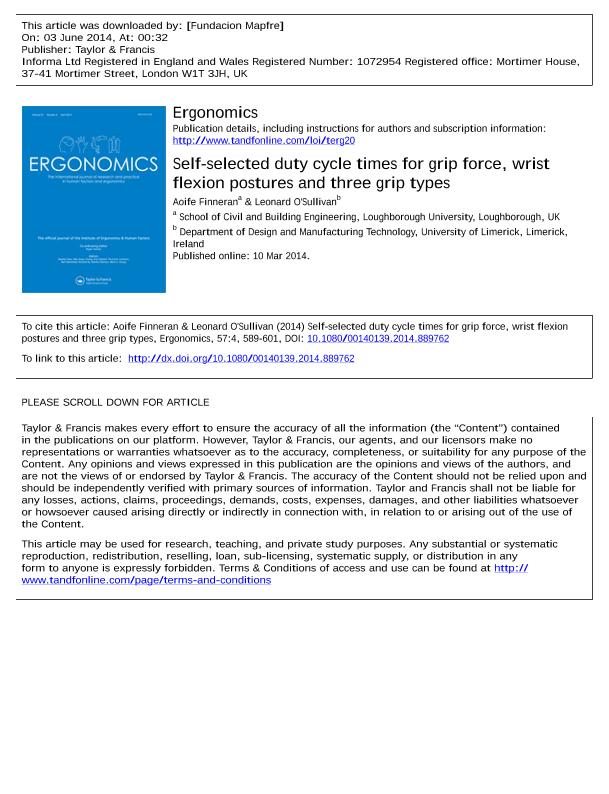Self-selected duty cycle times for grip force, wrist flexion postures and three grip types

Contenido multimedia no disponible por derechos de autor o por acceso restringido. Contacte con la institución para más información.
| Tag | 1 | 2 | Valor |
|---|---|---|---|
| LDR | 00000cab a2200000 4500 | ||
| 001 | MAP20140020058 | ||
| 003 | MAP | ||
| 005 | 20140604163718.0 | ||
| 008 | 140603e20140407esp|||p |0|||b|spa d | ||
| 040 | $aMAP$bspa$dMAP | ||
| 084 | $a875 | ||
| 100 | 1 | $0MAPA20140009626$aFinneran, Aoife | |
| 245 | 1 | 0 | $aSelf-selected duty cycle times for grip force, wrist flexion postures and three grip types$cAoife Finneran, Leonard O'Sullivan |
| 520 | $aPerformance and health issues are common in industry. On-the-job productivity gains related to good design, which could help justify ergonomics intervention, are often not considered. More quantitative data are needed to model the discomfort/productivity relationship for upper limb activity in simulated repetitive assembly type work. Eighteen participants completed an experiment, simulating a repetitive upper limb task with force, posture and grip type recorded as independent variables. Duty cycle time and discomfort were recorded as dependent variables. Participants performed 18 experiment combinations (block designed around force); each treatment lasted 35 min, including breaks. Analysis indicated a significant two-way interaction between posture and grip type. Results from this experiment were used to model the effect of these variables on operator discomfort and performance. | ||
| 773 | 0 | $wMAP20100019818$tErgonomics : the international journal of research and practice in human factors and ergonomics$dOxon [United Kingdom] : Taylor & Francis, 2010-$x0014-0139$g07/04/2014 Volumen 57 Número 4 - abril 2014 |

